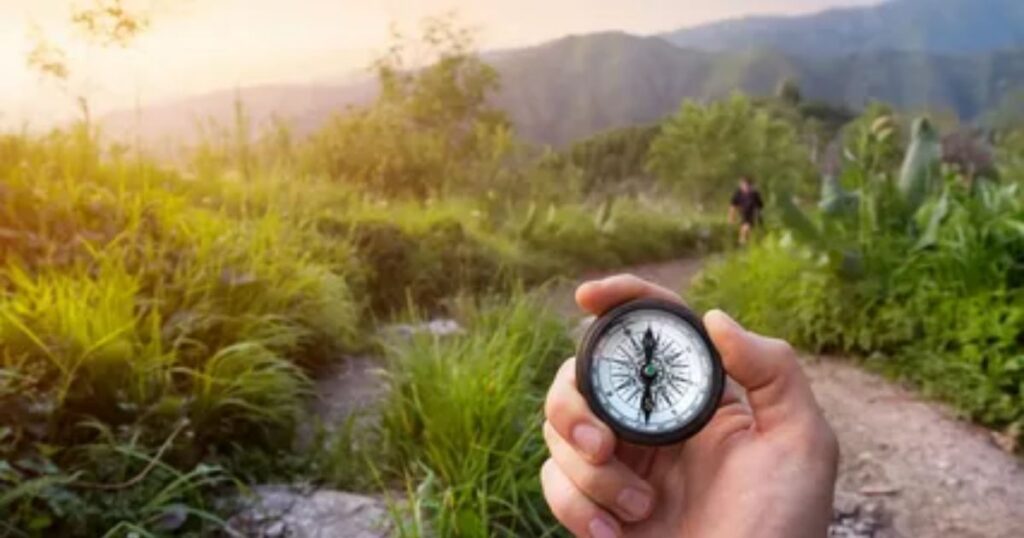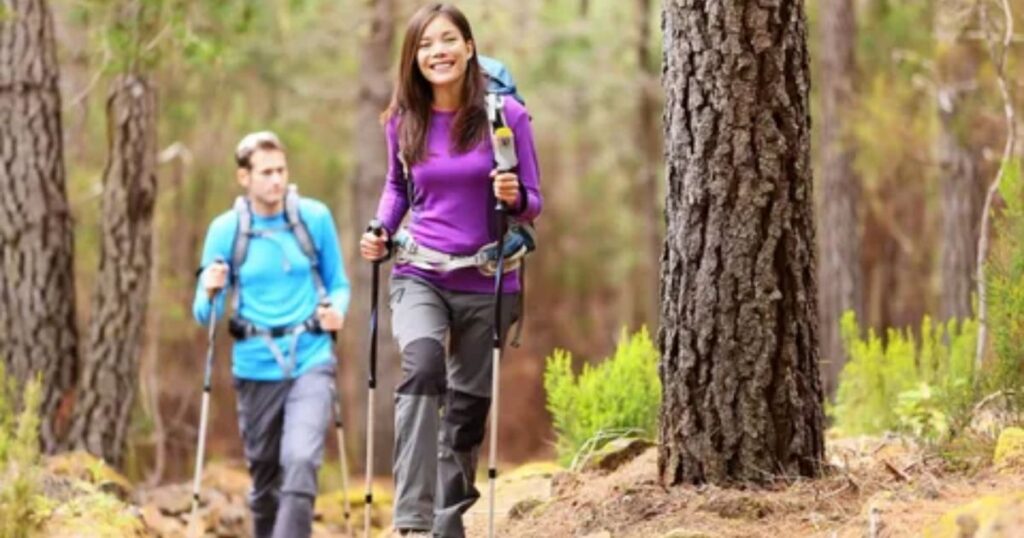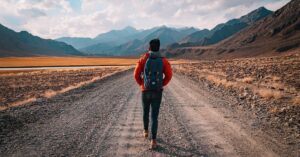Exploring uncharted trails can be an exhilarating and rewarding experience, but it requires careful planning, proper gear, and the right mindset. Whether you’re a seasoned adventurer or a novice hiker, venturing into unfamiliar terrain demands respect for nature and a commitment to safety.
This comprehensive guide will equip you with the knowledge and tools necessary to navigate through unknown landscapes confidently and responsibly.
Equipping For The Unknown
Embracing the thrill of exploring uncharted paths brings a surge of excitement. However, the right preparation becomes your map to success. Equipping for the unknown requires careful planning, as you don’t just step into the wilderness unprepared. You embrace it with the right gear and knowledge.
Choosing The Right Gear
Before stepping foot on unknown trails, selecting proper equipment is vital. Think of gear as your silent guardian, keeping you safe, comfortable, and moving forward.
– Durable backpack – Your all-day companion must withstand the elements.
- Quality hiking boots – Protect your feet with boots that grip and support.
- Weather-appropriate clothing – Layer up! Real adventurers don’t let weather stop them.
- Emergency shelter – A lightweight tent or bivy can be a lifesaver.
Must-have Navigation Tools
Stay on track and out of trouble with navigation tools. It’s easy to get lost, so don’t let that happen to you! Here’s what you need:
| Tool | Use |
| Compass | Find your bearings in any condition. |
| Topographic Map | Understand the terrain, plan your path. |
| GPS Device | Pinpoint locations, mark waypoints. |
| Trail Apps | Get updates, share your adventure. |
Remember, electronics can fail. Always bring a physical map and compass as backups!
Mastering Map And Compass

Embarking on a wilderness adventure stirs a blend of excitement and challenge, especially when navigating through terrain you’ve never tread before. The key to a successful journey lies in mastering the age-old skills of map and compass navigation.
In a world dominated by GPS technology, these traditional tools remain invaluable for any hiker seeking to traverse the great outdoors confidently and safely.
Reading Topographical Maps
Understanding the lay of the land is crucial before stepping out into the wild. Topographical maps provide a detailed 3D landscape on a 2D surface, showing all the hills, valleys, rivers, and man-made features you might encounter:
- Contours lines depict elevation.
- Color codes represent different types of terrain.
- Scale helps estimate real-world distances.
By mastering topographic maps, hikers gain insight into the terrain ahead. This knowledge paves the way for smart route planning and enhances situational awareness.
Compass Basics And Orientation
Navigating with a compass is a timeless skill that every hiker should possess. It’s not just about knowing where north is; a compass, paired with a map, can pinpoint your exact location and the best route to your destination. Here’s what every explorer needs to understand:
- Parts of a compass: Get familiar with the baseplate, needle, bezel, and orienteering arrows.
- Magnetic North vs. True North: Learn to adjust for declination.
- Taking bearings: Use your map to set a course, and your compass to follow it.
Also read this Post: Havasu Falls Without Hiking
Regular practice with these instruments enhances your navigation proficiency, ensuring a safer and more enjoyable hike.
Safety Measures On Uncharted Trails
Exploring unknown trails is an adventure that calls for smart preparation. The thrill of discovery and the beauty of nature can be breathtaking, but it’s crucial to be aware of the risks. This guide contains essential safety measures for anyone brave enough to hike uncharted trails.
Emergency Protocols
Taking the right steps during an emergency is vital. Prepare beforehand to handle unpredictable situations.
- Share your plans: Always inform someone about where you’re going and when you plan to return.
- Carry a map and compass: Know how to use them to navigate your way back if needed.
- Emergency whistle: Keep it on hand to signal for help.
- Stay put: If lost, stay where you are to avoid getting further off track.
Wildlife Encounters And Precautions
Unfamiliar trails can mean unknown wildlife. Understanding how to deal with animals is key.
| Animal | Action |
| Bears | Make noise to avoid surprise encounters. Carry bear spray. |
| Snakes | Watch where you step. If you see one, give it space. |
| Insects | Use repellent, wear long sleeves, and pants. |
Remember: Don’t feed wildlife and observe from a distance.
Environmental Considerations
As adventurers venture into the wilderness, the harmony of nature and its preservation are paramount. Hiking into unfamiliar terrain brings the joy of exploration, with environmental considerations at the forefront to protect these pristine spaces. Every step should contribute to a sustainable future for the trails we tread and the landscapes we cherish.
Minimizing Ecological Impact
Preserving the environment while hiking is crucial. Here are simple yet effective ways to minimize our footprint:
- Stick to marked trails to avoid disturbing local flora and fauna
- Carry out all trash without leaving any behind
- Respect wildlife by observing from a distance and not feeding them
- Use eco-friendly products to lessen pollution
- Partake in leave-no-trace principles
Adapting To Varying Weather Conditions
Weather changes swiftly in the wild. Being prepared is key to a safe hike:
- Monitor weather forecasts before heading out
- Wear layered clothing to adjust for temperature changes
- Carry waterproof gear for sudden rain
- Plan for unforeseen delays due to weather
- Learn basic survival skills for unexpected situations
Physical And Mental Preparation

Stepping into the unknown thrills and challenges adventurers. Hiking unfamiliar terrains demands readiness beyond the physical gear. It’s about body strength and mind power. Prepare both, and the journey turns memorable.
Conditioning For Tough Terrains
Tough trails are taxing on the body. Conditioning prevents injuries and boosts endurance. Start with a fitness routine tailored to hiking. Focus on cardio, strength, and flexibility. Cardio pumps up stamina for long climbs. Strength training fortifies legs, back, and core. Stretching adds flexibility, keeping muscles limber.
- Cardio exercises: running, cycling, swimming
- Strength workouts: squats, lunges, deadlifts
- Flexibility sessions: yoga, Pilates
Psychological Resilience
The mind must endure as much as the body. Mental toughness conquers unexpected challenges. It starts with a positive mindset. Set goals and visualize success. Encounter fears, and push past them. Stress management techniques aid in keeping calm. Meditation, deep breathing, and mindfulness help. They provide clarity and focus on the trail.
| Technique | Benefits |
| Meditation | Boosts focus, eases stress |
| Deep Breathing | Controls panic, fosters calm |
| Mindfulness | Enhances awareness, reduces anxiety |
Trailblazing Technology
Heading into the wild brings a sense of adventure. Yet, the right technology makes it safer and more enjoyable. In unfamiliar terrain, it’s easy to get lost. That’s where trailblazing technology steps in. This gear supports navigation through any path less traveled. Let’s dive into the tech that keeps you on track.
GPS And Digital Apps
Global Positioning System (GPS) devices and digital apps are hikers’ best friends. With these tools, one can pinpoint their exact location. Check out how they help:
- Real-time Location: Find where you are in seconds.
- Route Planning: Set your path before or during the hike.
- Trail Database: Access a vast library of marked trails.
- Offline Maps: Download maps to use without cell service.
Brands like Garmin offer rugged GPS devices built for the outdoors. Digital Apps such as AllTrails and Gaia GPS turn your smartphone into a navigation tool.
The Role Of Satellite Messengers
Satellite messengers keep you connected beyond cell range. These devices offer crucial features:
| Messenger Feature | Benefit |
| SOS Alerts | Send an emergency signal to rescuers. |
| Two-way Messaging | Chat with family, even without phone signal. |
| Check-Ins | Notify loved ones you’re safe with a click. |
| Location Sharing | Share your trek with friends in real-time. |
Garmin In Reach and SPOT devices are top picks for satellite communication. They help ensure that even in the remotest locations, you’re never
FAQ’s
What Is The Best Way To Keep Your Bearings If You Are Hiking Into Unfamiliar Terrain?
The best way to keep your bearings when hiking into unfamiliar terrain is to use a map and compass, stick to marked trails, observe natural landmarks, and keep a GPS device handy. Regularly checking your position will help avoid getting lost.
What Resources Can Best Help You Learn About The Terrain In A Particular Area Before You Arrive?
Online topographic maps and satellite imagery services like Google Earth provide detailed terrain information before arriving at a particular area. Local hiking websites and nature apps also offer valuable insights into the specific landscapes.
What Is The Correct Treatment For Shock Hunter Ed Quizlet?
The correct treatment for shock during a Hunter Education course involves laying the person down, elevating their feet, keeping them warm, and seeking immediate medical attention.
Which Of The Following Describes A Proper Way To Prepare For Hunting Trip?
A proper way to prepare for a hunting trip includes obtaining the required hunting licenses and permits, familiarizing yourself with local hunting regulations, practicing firearm safety and shooting proficiency, preparing essential hunting gear and dressing appropriately, and planning for emergencies with a first aid kit and communication methods.
Summary
Venturing into unknown trails can be both thrilling and challenging. It demands preparation, respect for nature, and a willingness to learn. As you lace up for your next adventure, remember the journey is about discovery and personal growth. Each step is a story waiting to unfold—embrace it with an open heart.
Keep exploring, keep growing.

J.K. Rolowing, an avid hiking enthusiast with 8 years of experience, blends passion and nature in captivating tales. Embracing the trail, weaving adventures through words.











